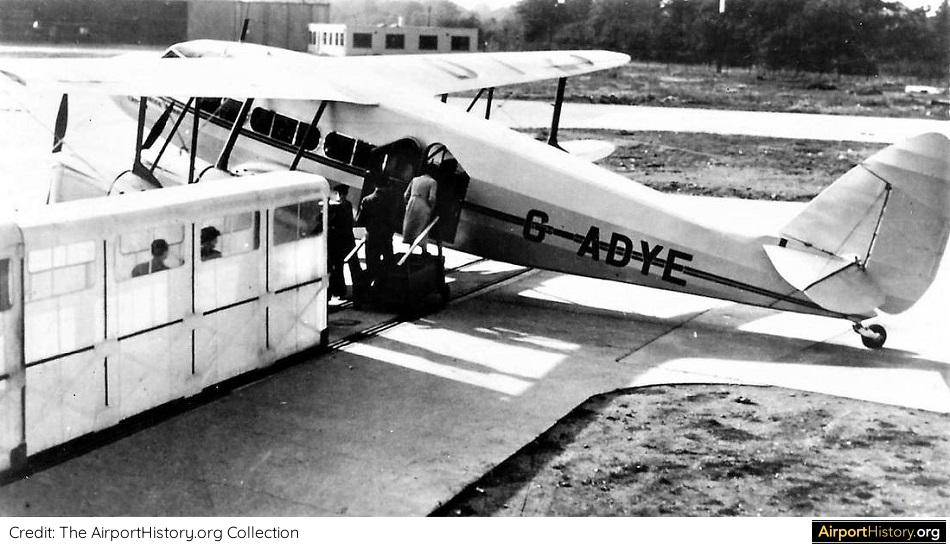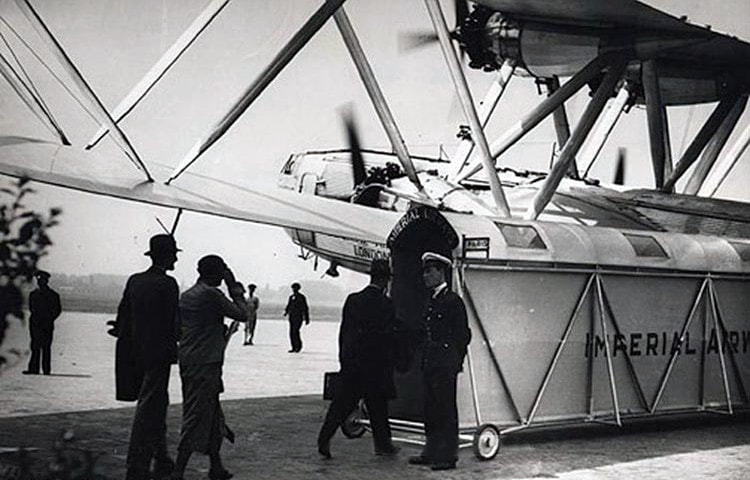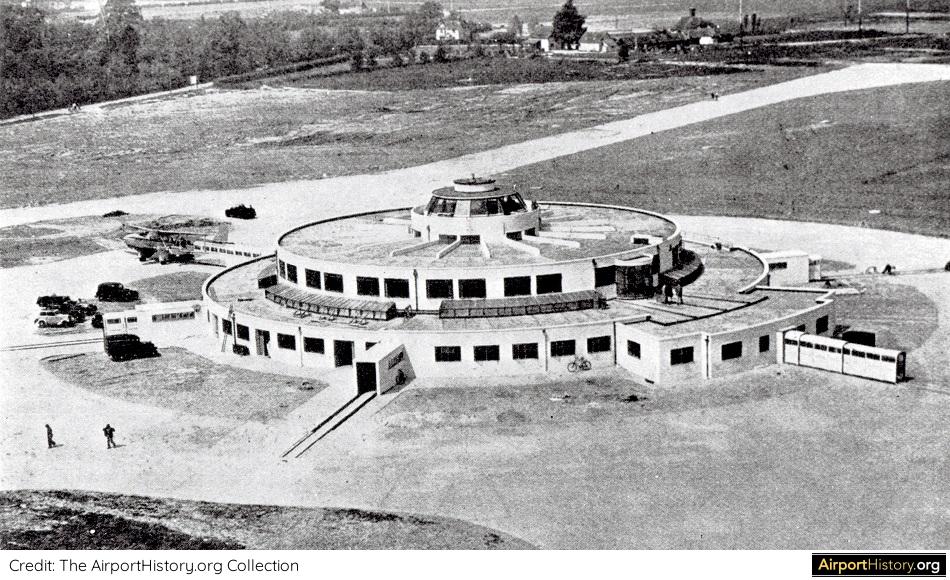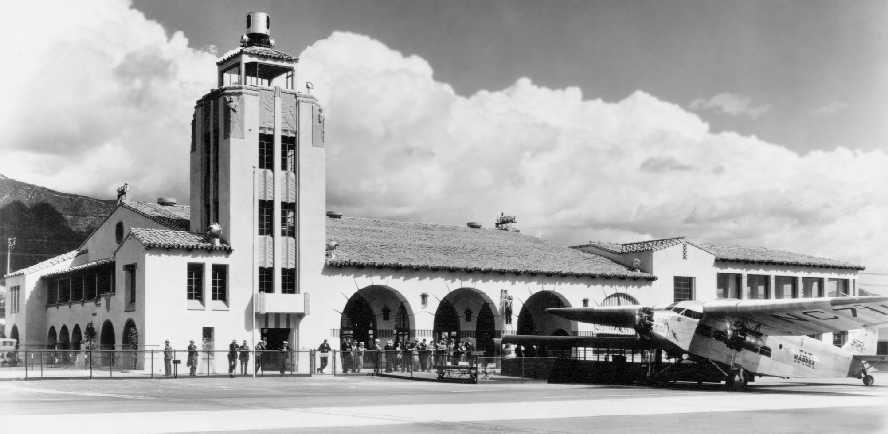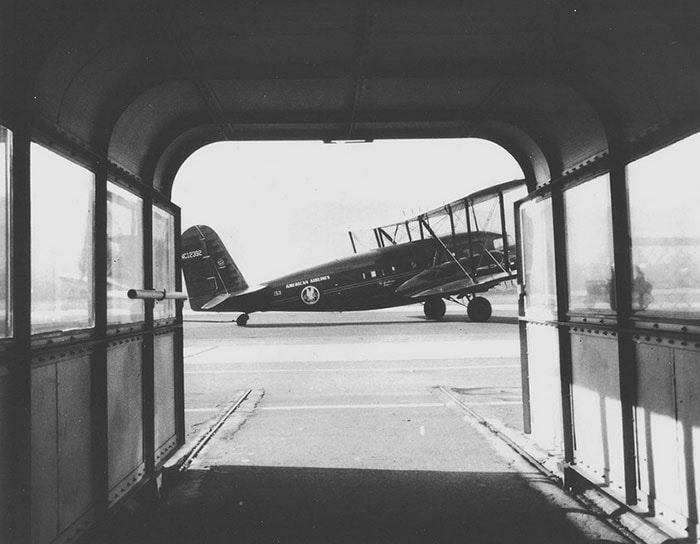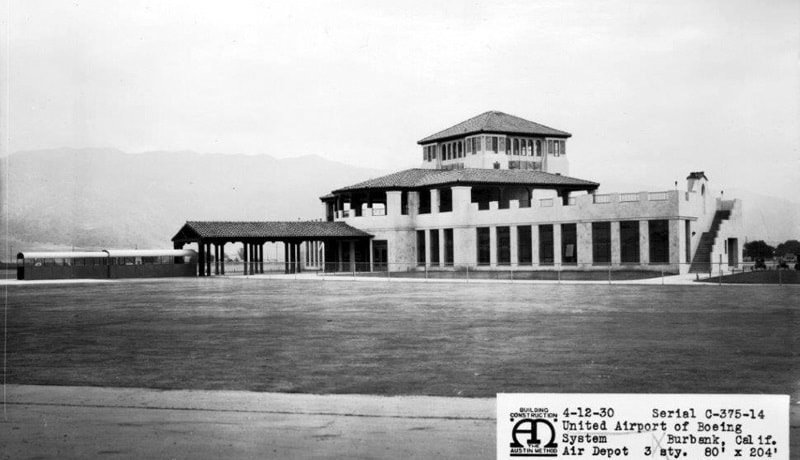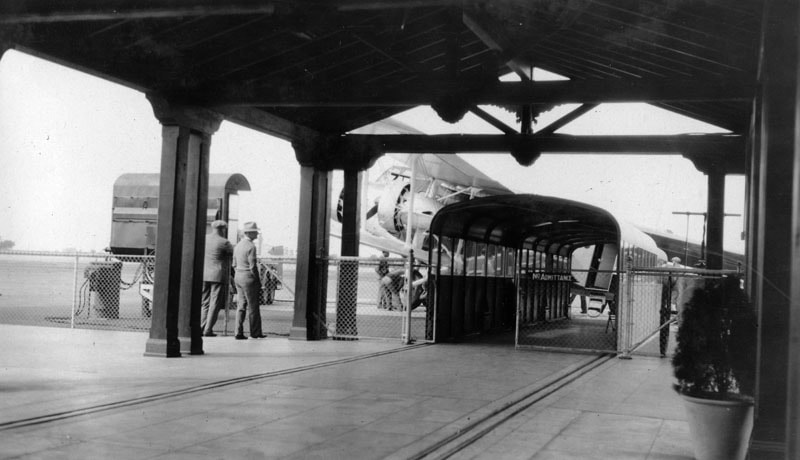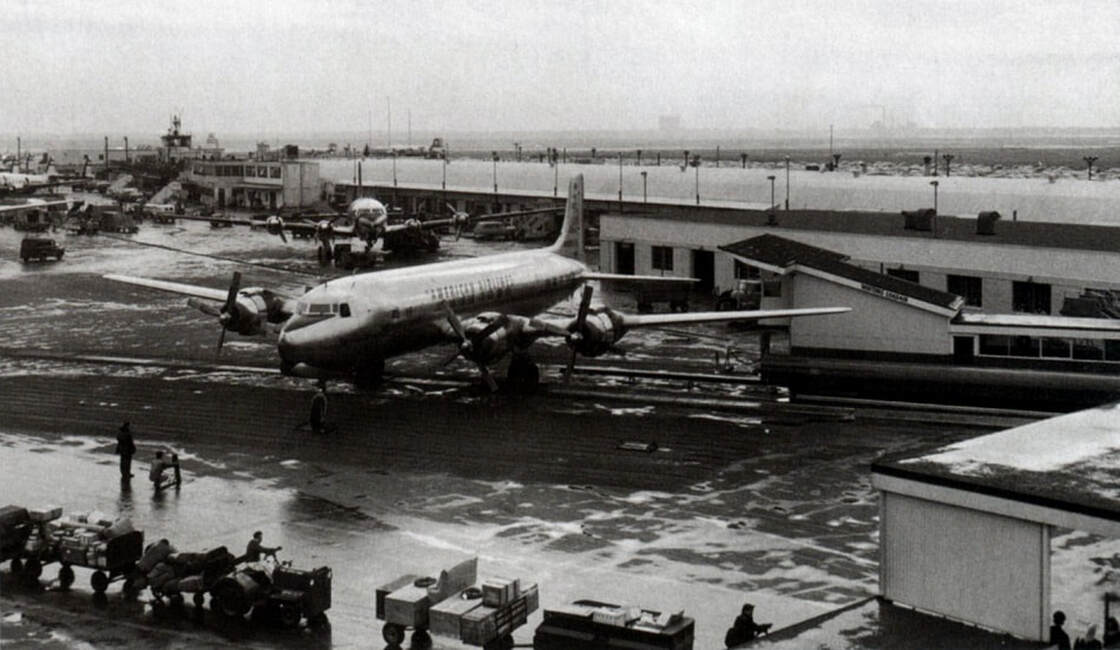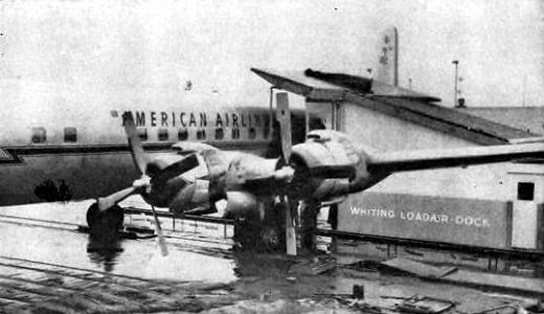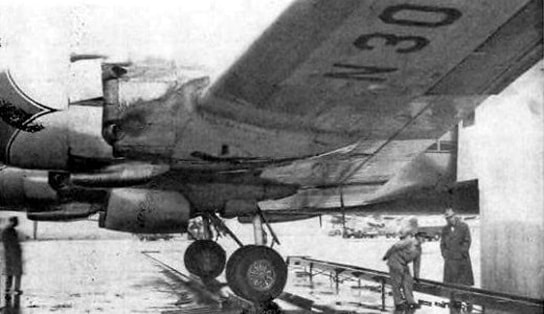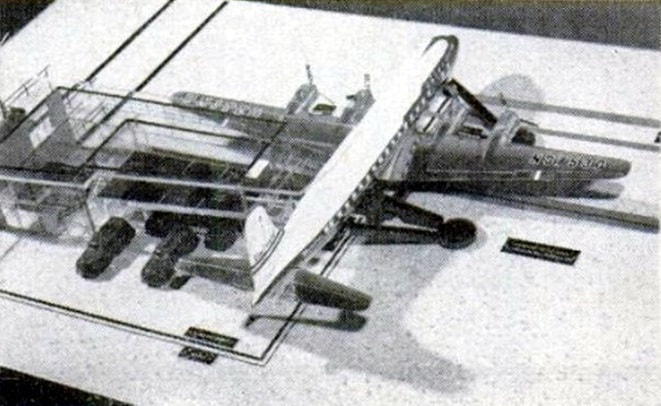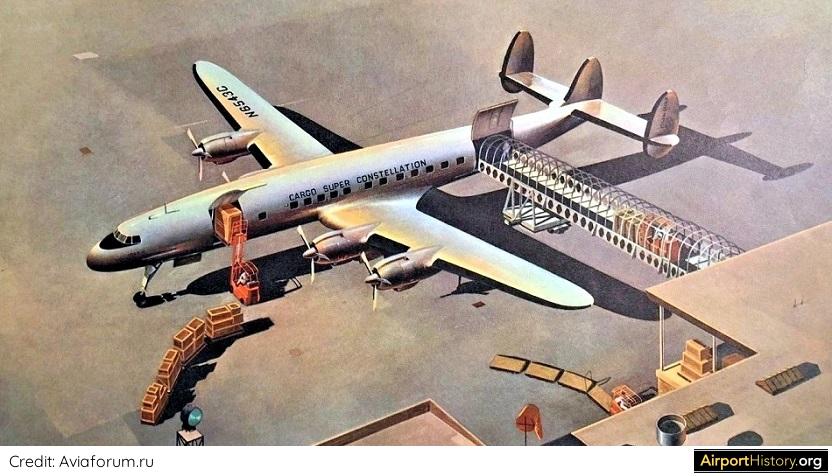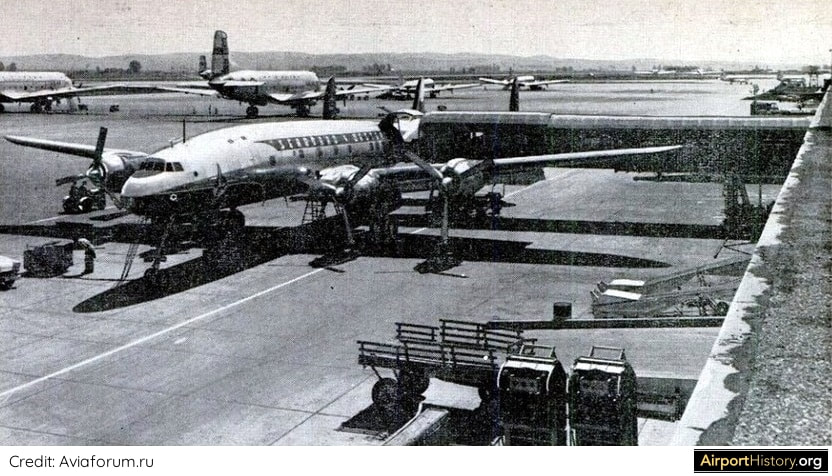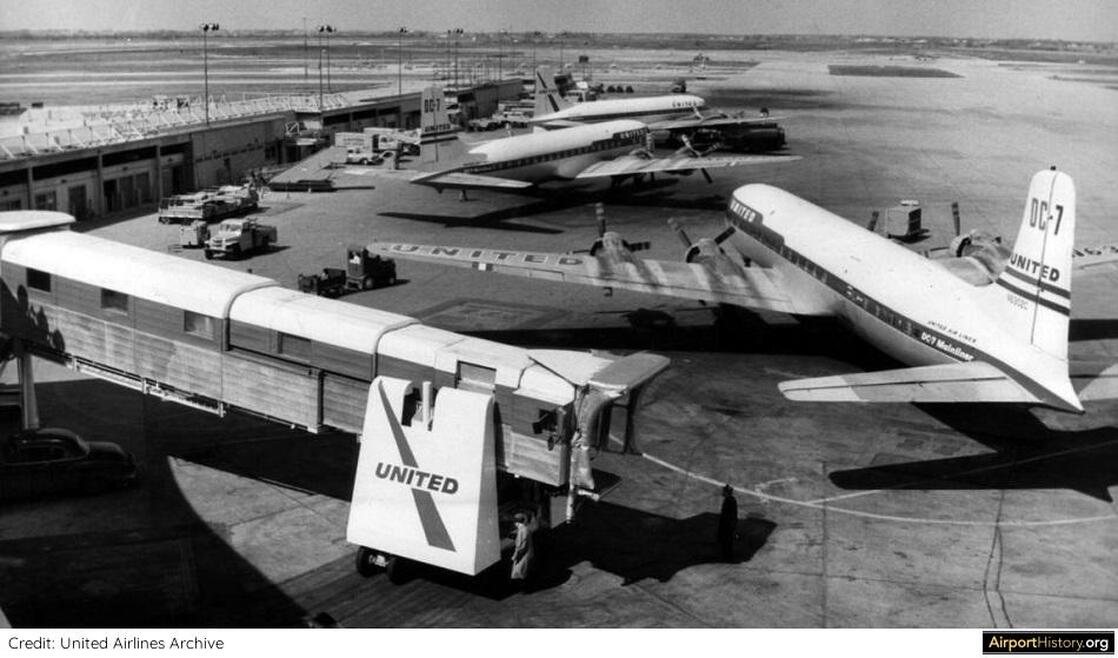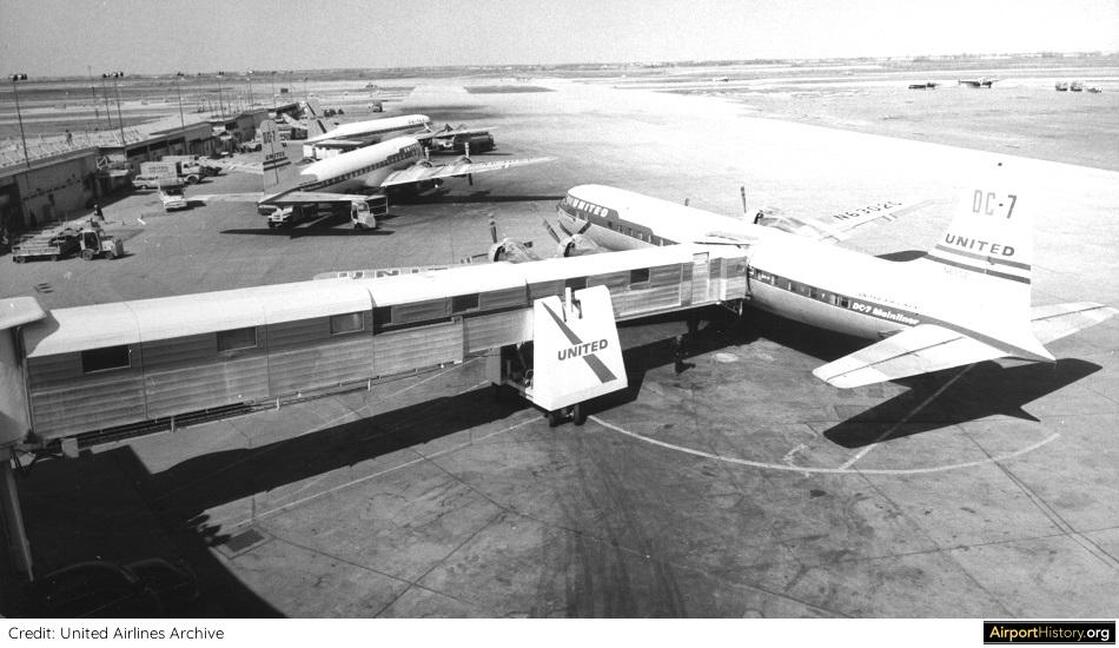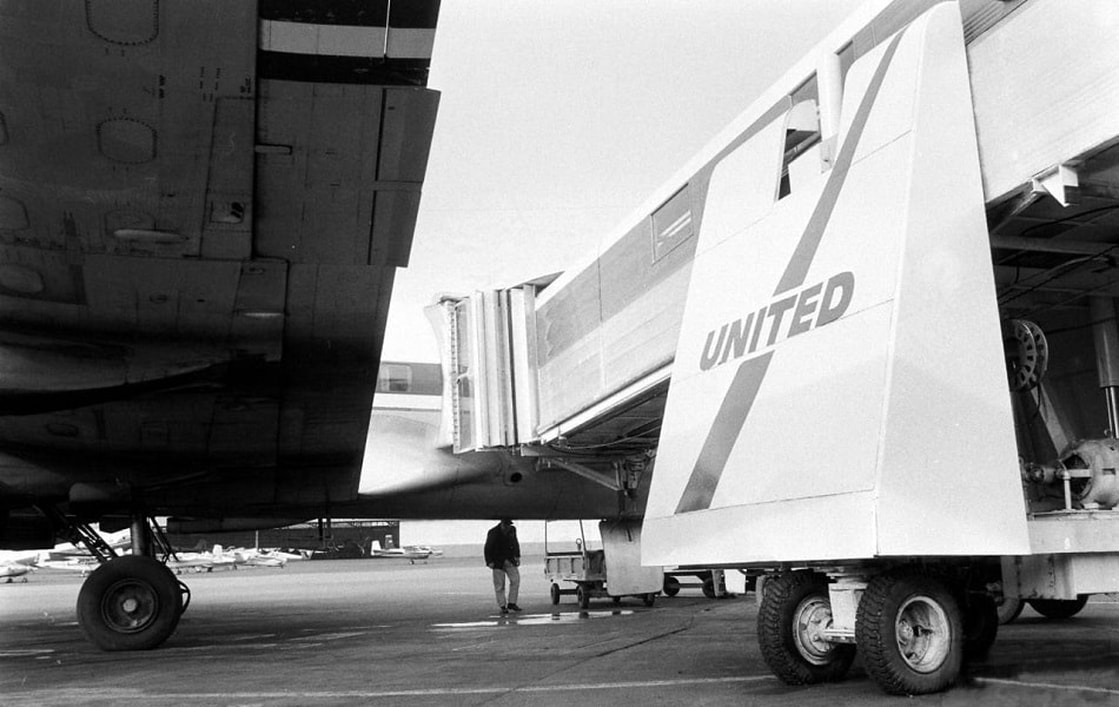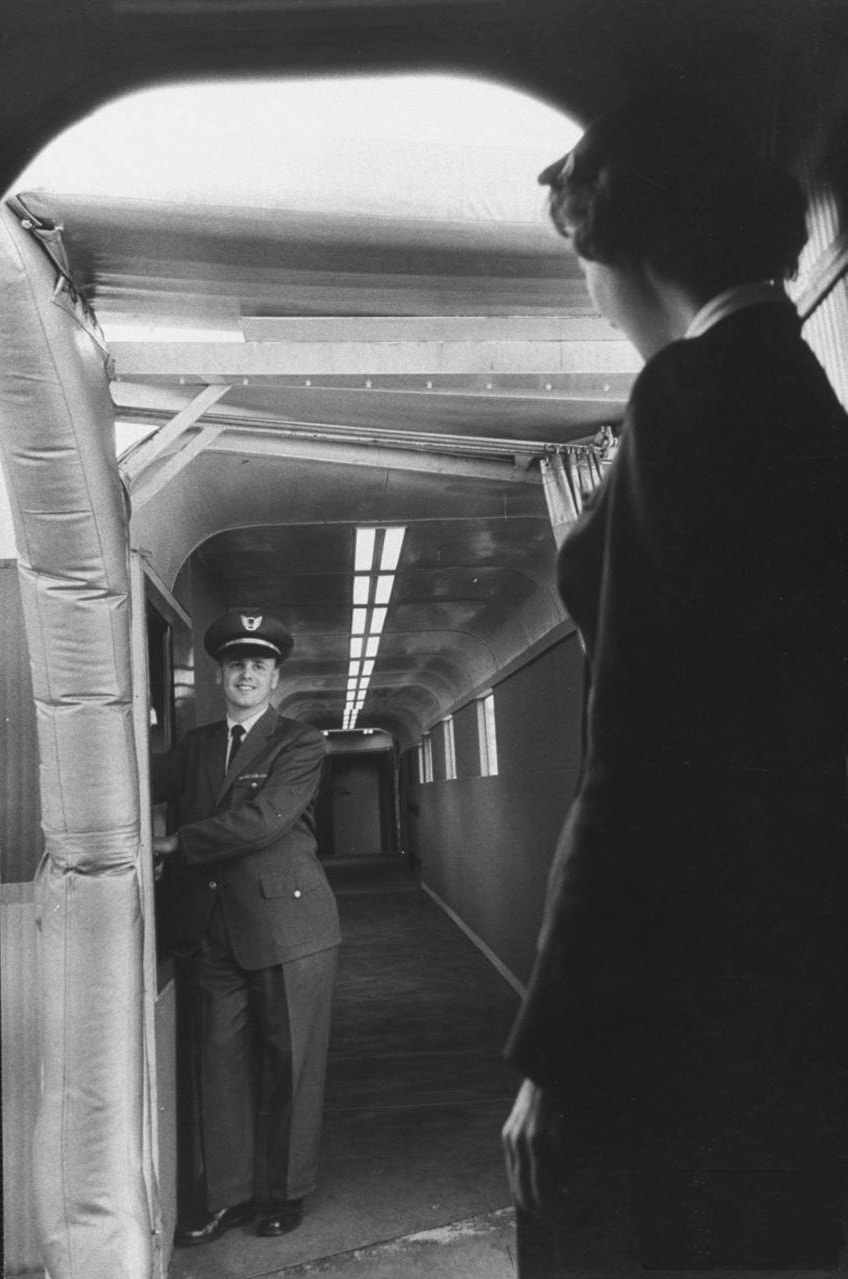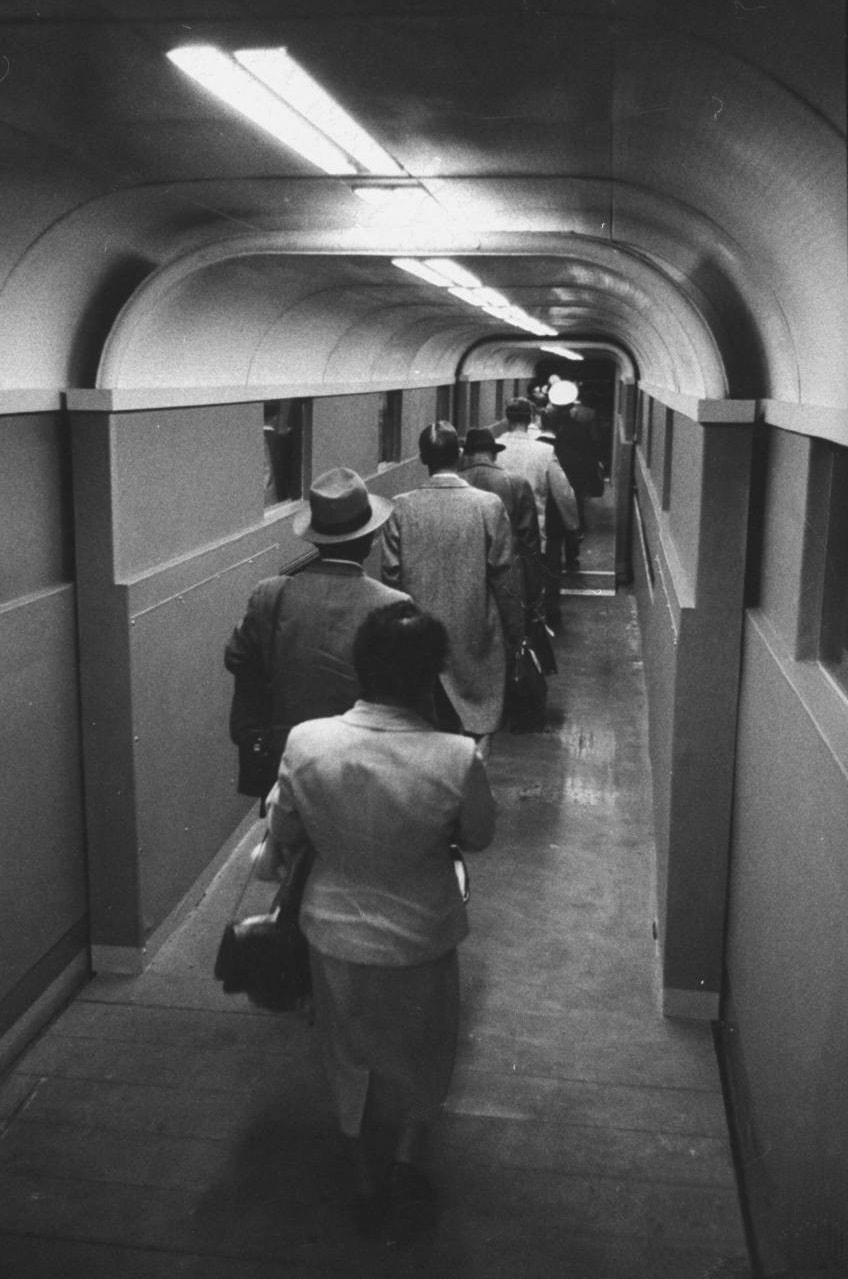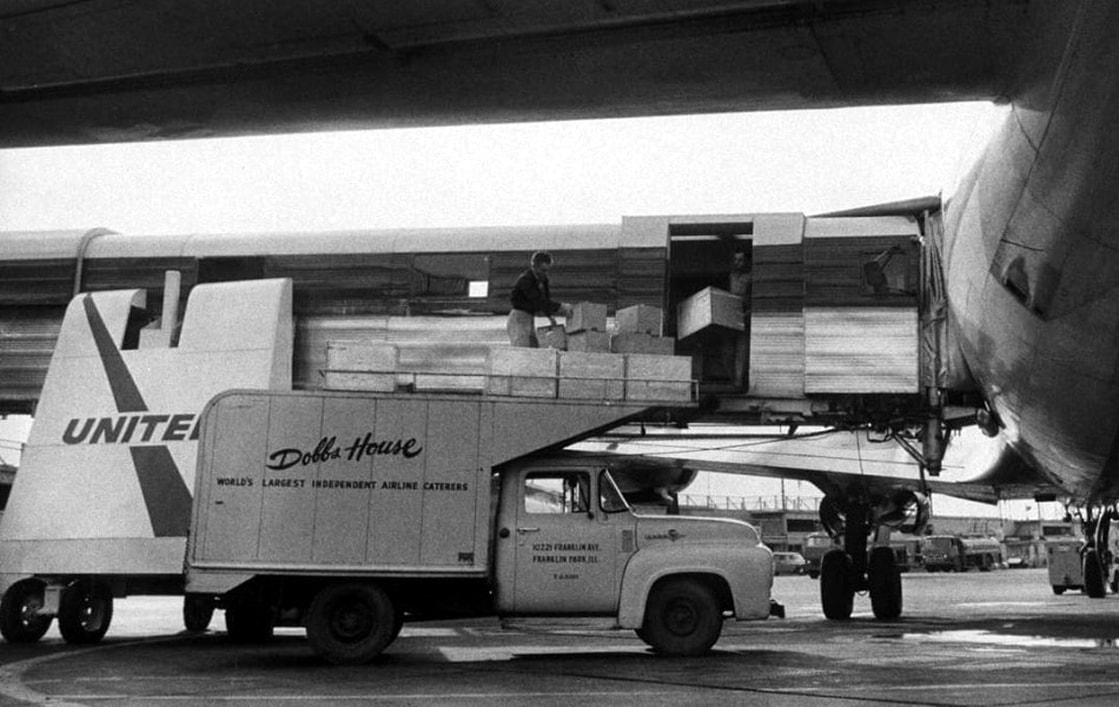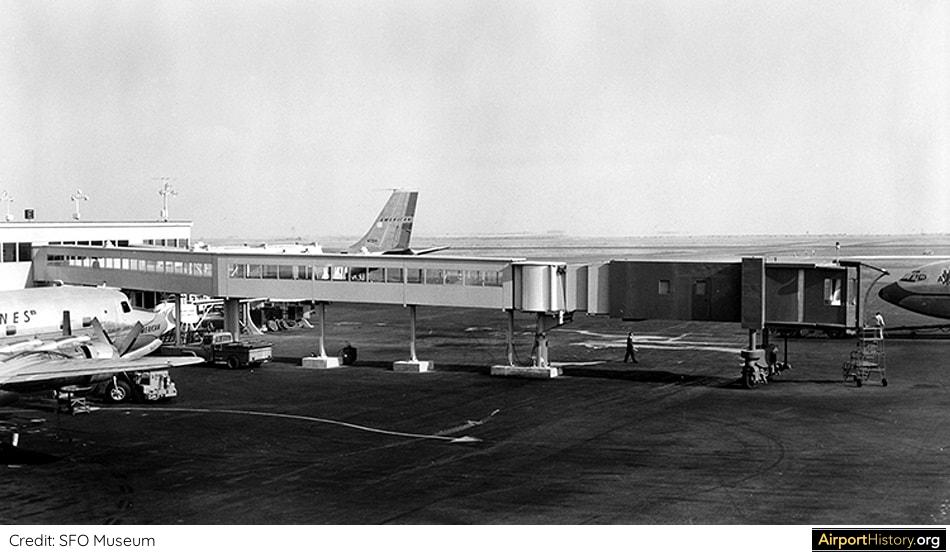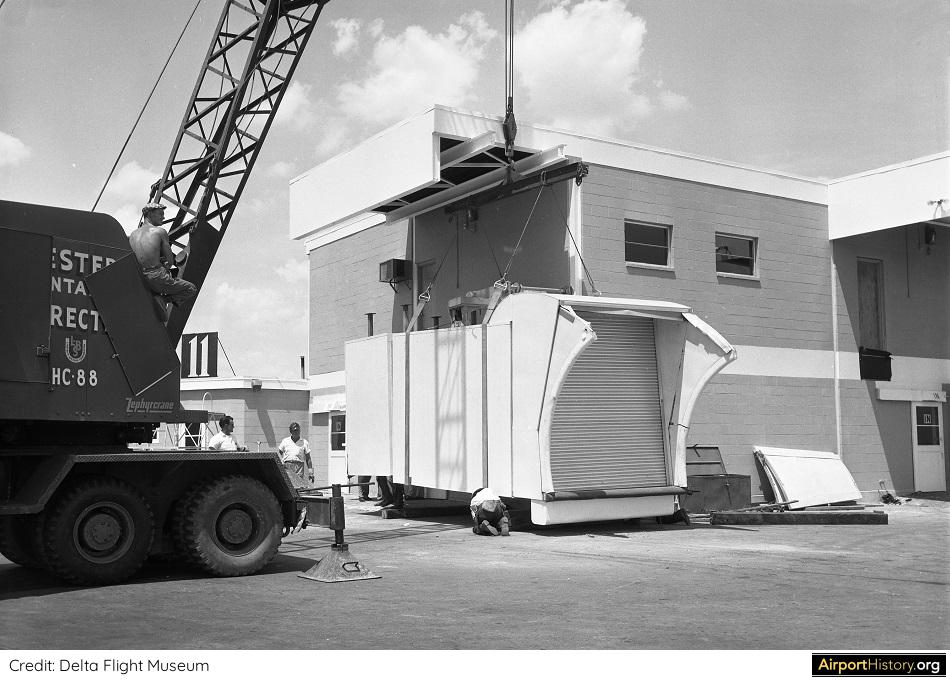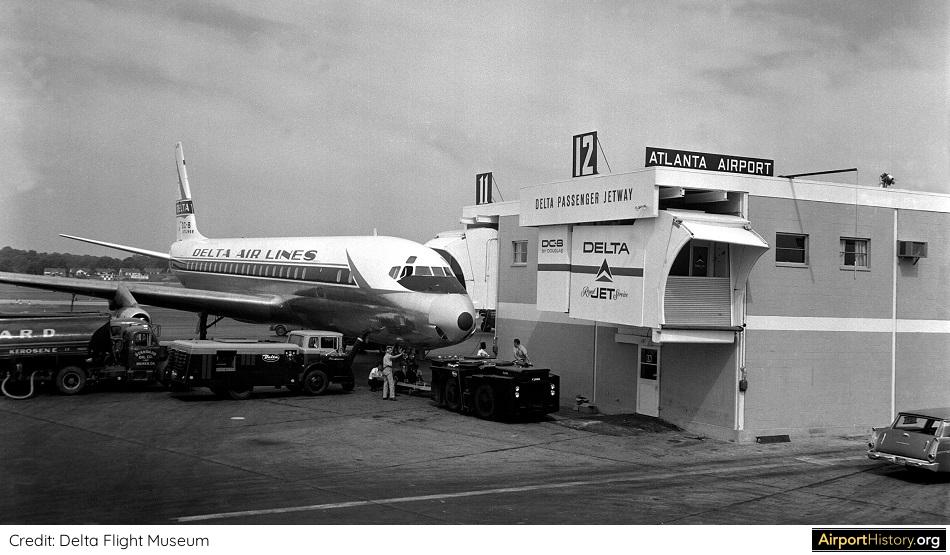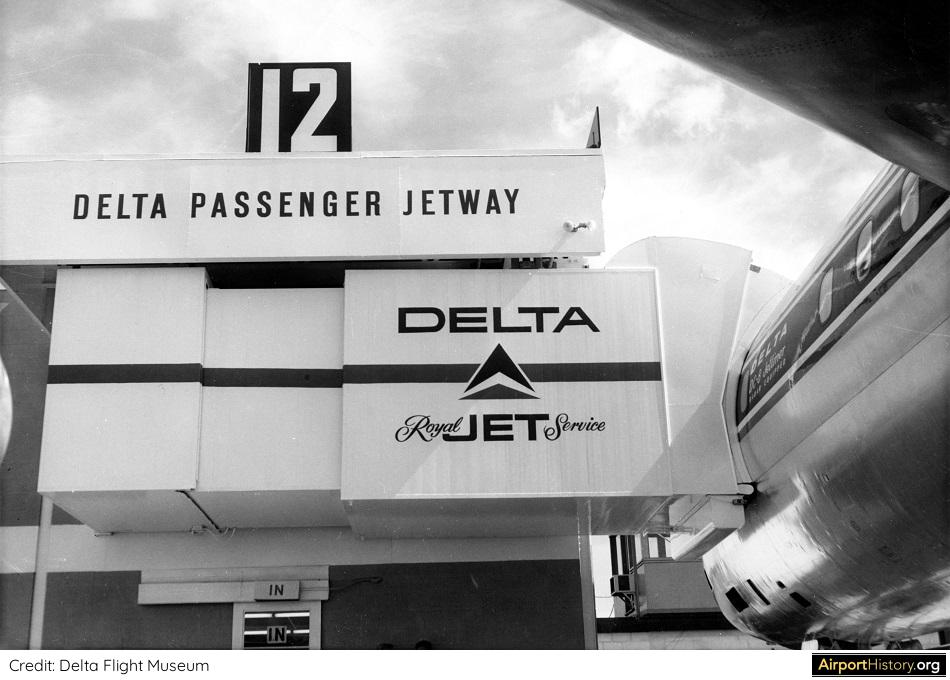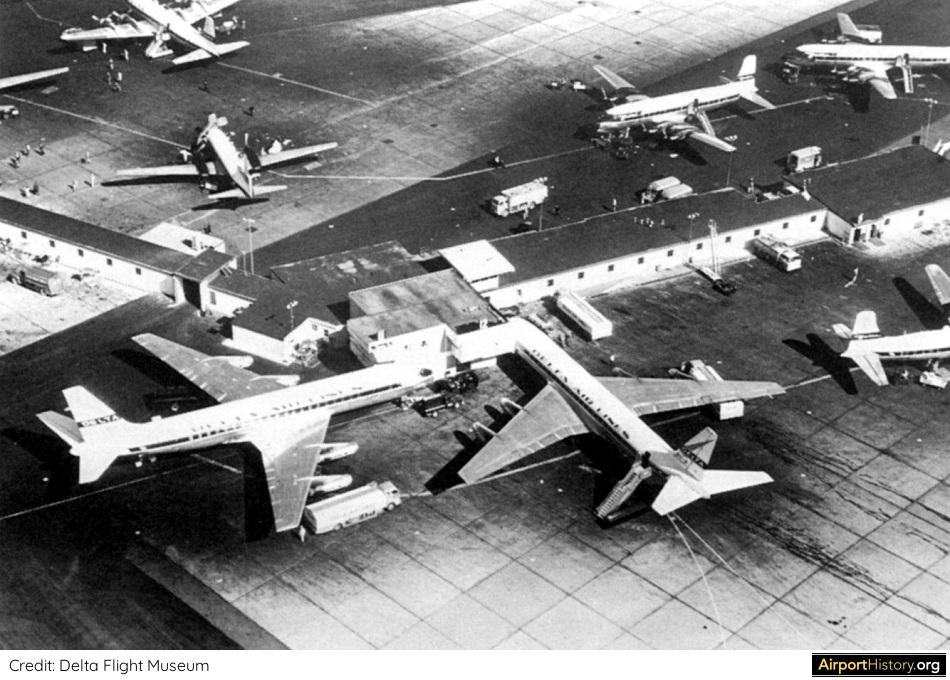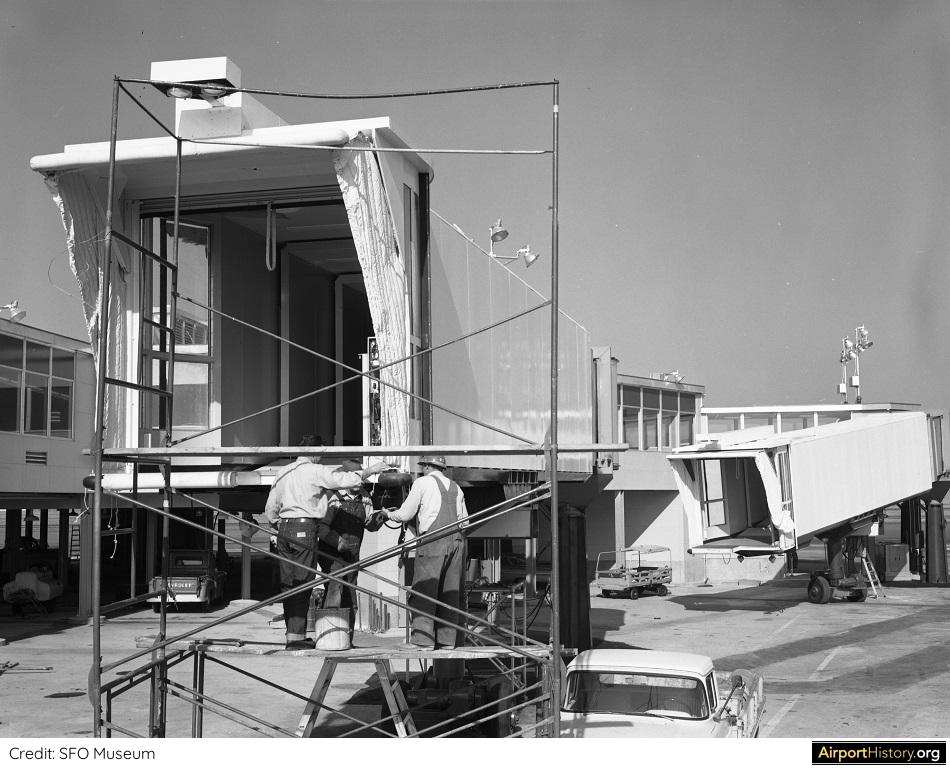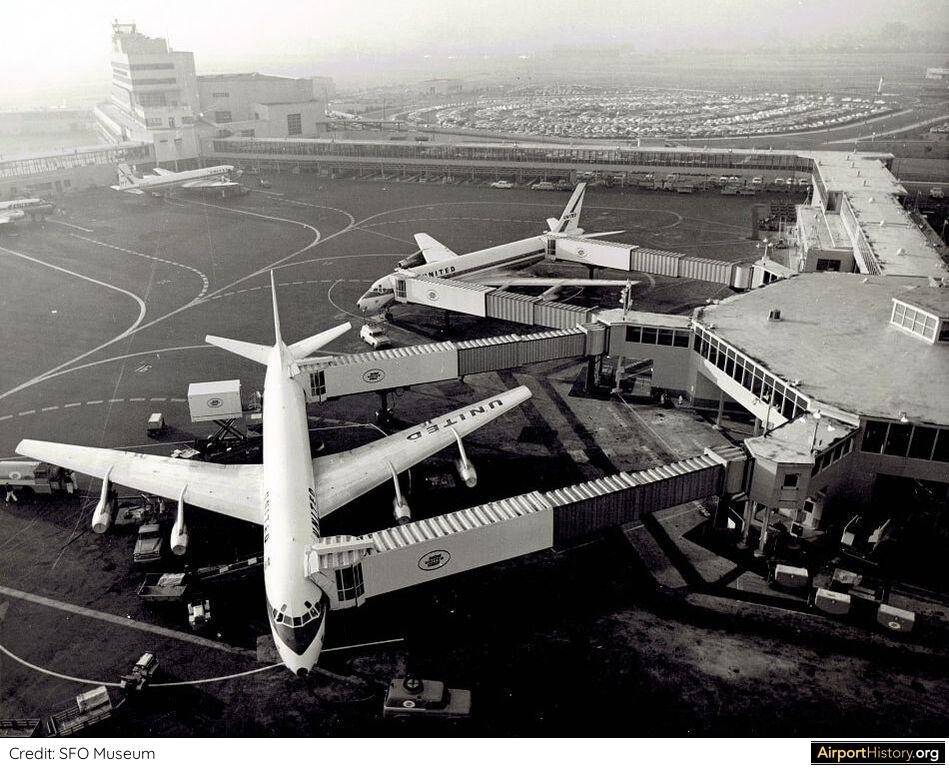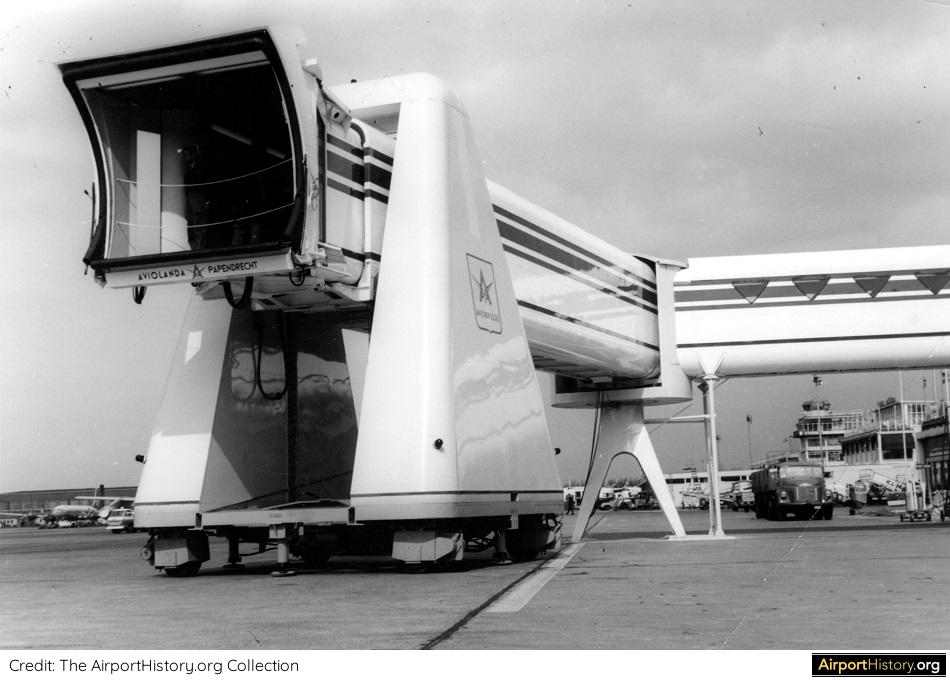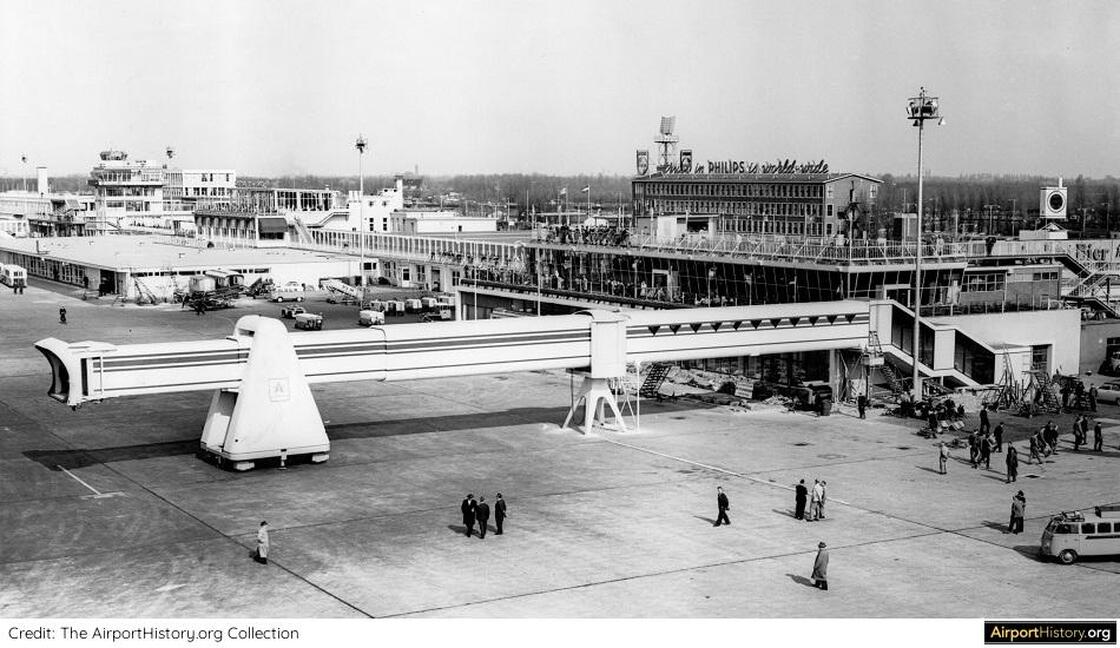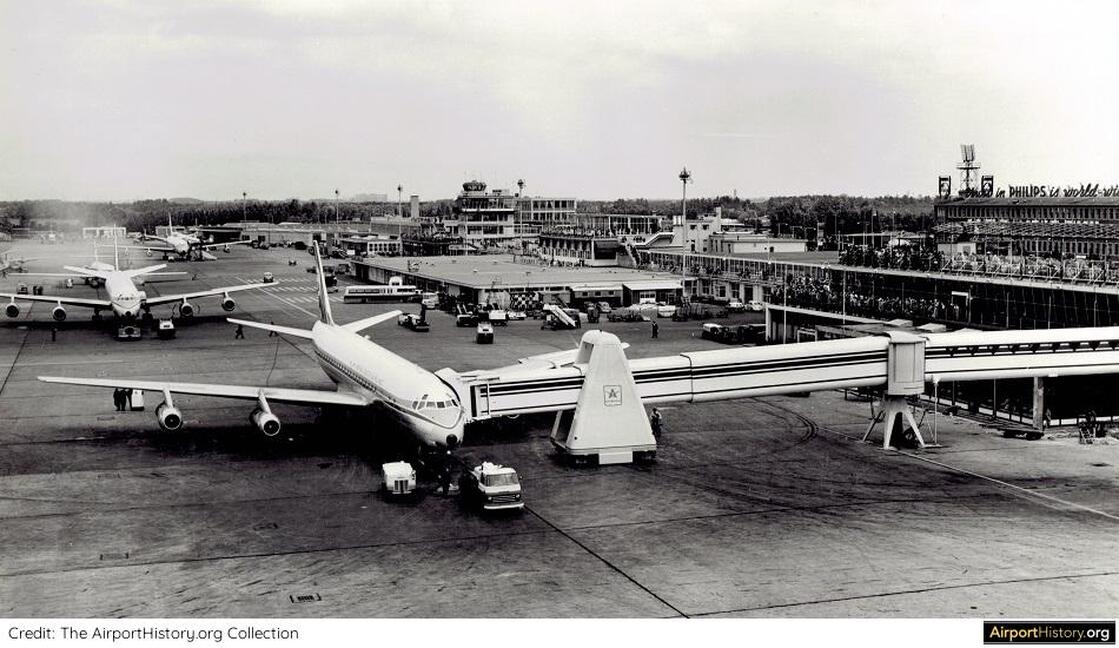Published: July 2, 2019
Introduction
When you're about to board an aircraft and pass through a boarding bridge, it's sometimes hard to appreciate what a remarkable innovation you're passing through. In fact, it has a history all on its own.
Passenger boarding bridges, also referred to as 'passenger loading bridges', 'jetways', 'jet bridges' or 'jetties', enable quick and efficient loading of aircraft as well as protect passengers against inclement weather, aircraft fumes, noise and the other potential dangers on the ramp.
Boarding bridges have been a standard feature at airports around the world for decades, but do you know when and where they were first used? In a three-part feature, Airporthistory.org explores the roots of the modern boarding bridge and shows how their use slowly spread across the US and around the world.
In part one, we will look at the predecessors of the boarding bridge and the first modern boarding bridges used at airports in the US and abroad.
Passenger boarding bridges, also referred to as 'passenger loading bridges', 'jetways', 'jet bridges' or 'jetties', enable quick and efficient loading of aircraft as well as protect passengers against inclement weather, aircraft fumes, noise and the other potential dangers on the ramp.
Boarding bridges have been a standard feature at airports around the world for decades, but do you know when and where they were first used? In a three-part feature, Airporthistory.org explores the roots of the modern boarding bridge and shows how their use slowly spread across the US and around the world.
In part one, we will look at the predecessors of the boarding bridge and the first modern boarding bridges used at airports in the US and abroad.
Predecessors of the modern boarding bridge
|
MOVABLE WALKWAYS (EARLY 1930s)
London's Croydon Airport featured movable passenger walkways as far back as 1931. Their main function was not to protect passengers from inclement weather but to protect them from propeller wash from running aircraft engines. The walkways did not extend completely to the passenger building. Also, as aircraft at the time were tail wheel types and the passenger door was at the rear of the aircraft, the walkway was only a short distance above the ground. However, this clearly demonstrates that the concept of the boarding bridge was conceived in the very early days of commercial aviation. |
TELESCOPIC CANOPIES (MID-1930s)
In the mid-1930s a number of airports introduced a solution whereby canopies extended out from the terminal building to the aircraft. Steel rails embedded in the apron surface allowed the canopy (on casters) to be moved forward and backward. This solution was applied on a large scale at London's Gatwick Airport in 1936. Gatwick's "Beehive", a circular shaped terminal, had six gates equipped with telescopic "gangways".
The movable canopies could also be found at a number of airports in the US. Examples are the Pan American Airways Dinner Key Flying Clipper seaplane base in Miami; the Grand Central Air Terminal in Glendale; the United Airport in Burbank and Alhambra Airport in Los Angeles.
In the mid-1930s a number of airports introduced a solution whereby canopies extended out from the terminal building to the aircraft. Steel rails embedded in the apron surface allowed the canopy (on casters) to be moved forward and backward. This solution was applied on a large scale at London's Gatwick Airport in 1936. Gatwick's "Beehive", a circular shaped terminal, had six gates equipped with telescopic "gangways".
The movable canopies could also be found at a number of airports in the US. Examples are the Pan American Airways Dinner Key Flying Clipper seaplane base in Miami; the Grand Central Air Terminal in Glendale; the United Airport in Burbank and Alhambra Airport in Los Angeles.
Postwar developments
As Europe was recovering from WWII, the US became the world leader in aviation and it's here that some fascinating concepts see the light of day.
THE "LOADAIR DOCK" (1952)
The idea of moving the plane to the dock for boarding passengers had already been conceived in the 1940s, but was first tested by the Whiting Corp., together with Colombian airline Avianca in 1952 at Barranquilla Airport in Colombia.
THE "LOADAIR DOCK" (1952)
The idea of moving the plane to the dock for boarding passengers had already been conceived in the 1940s, but was first tested by the Whiting Corp., together with Colombian airline Avianca in 1952 at Barranquilla Airport in Colombia.
|
The system, called "Whiting Loadair", was a mechanical device that docked airplanes by moving them sideways to a covered walkway, connected to the terminal. Dollies on sunken tracks were used to pull the aircraft into position.
In January 1955, an upgraded version, now renamed the "Loadair Dock", was upgraded and installed at New York's Idlewild Airport for a three-year experimental trial under an agreement between Whiting Corp., American Airlines and the Port Authority of New York and New Jersey. During the tests, significant system deficiencies were identified, and as a result, the system was dismantled in the fall of 1956. More than 1,500 flights were serviced during its operation at Idlewild. |
THE "AIRDOCK" (1954)
In 1953, United Air Lines, using Whiting's Loadair concept as a base, completed the design of a more complex system, which it called "Airdock".
In 1953, United Air Lines, using Whiting's Loadair concept as a base, completed the design of a more complex system, which it called "Airdock".
|
The Airdock featured two retractable ramps for the loading of passengers, cargo, mail and luggage as well as an aircraft refueling system.
Contrary to the Loadair, the Airdock was not an extension to the terminal but an independent structure. According to a source, an experimental Airdock was built at United's hub at Denver Stapleton in 1954. To date, I have not been able to find photographic evidence of this and I doubt it actually was ever built. |
THE "AEROBRIDGE" (1956)
The "Aerobridge", designed by Lockheed Air Terminal Inc. of Burbank, California, was a portable, swiveling ramp designed to connect the aircraft with a cargo or passenger terminal. The Aerobridge had had its own power unit and had a retractable section, which allowed it to change its length from 76 feet (23 meters) to 89 feet (27 meters).
Later, it was decided to create separate passenger and cargo versions of the Aerobridge. The cargo version, produced by "Universal Fabricating Co.", was tested in November 1956 at Travis Air Force base.
The "Aerobridge", designed by Lockheed Air Terminal Inc. of Burbank, California, was a portable, swiveling ramp designed to connect the aircraft with a cargo or passenger terminal. The Aerobridge had had its own power unit and had a retractable section, which allowed it to change its length from 76 feet (23 meters) to 89 feet (27 meters).
Later, it was decided to create separate passenger and cargo versions of the Aerobridge. The cargo version, produced by "Universal Fabricating Co.", was tested in November 1956 at Travis Air Force base.
The first experimental modern boarding bridge
THE "AERO-GANGPLANK" (1958)
The "Aero-Gangplank", designed by Lockheed Air Terminal Inc. for United Airlines, was an evolution of Lockheed's "Aerobridge". The Aero-Gangplank was a fully enclosed boarding bridge that could extend like a telescope from a retracted length of 55 feet (17 meters) to a maximum length of 107 feet (32 meters). It could also move in a horizontal arc as well as vertically.
In its stored position the bridge left the gate area clear, allowing aircraft to taxi in under their own power. Once swung out in the extended position, the bridge's vertical movement allowed it to cater for different door still heights.
These characteristics definitely make the Aero-Gangplank the first modern passenger boarding bridge. A single prototype was installed at Chicago O'Hare Airport on Friday, March 28, 1958 and was tested until November of the same year.
The "Aero-Gangplank", designed by Lockheed Air Terminal Inc. for United Airlines, was an evolution of Lockheed's "Aerobridge". The Aero-Gangplank was a fully enclosed boarding bridge that could extend like a telescope from a retracted length of 55 feet (17 meters) to a maximum length of 107 feet (32 meters). It could also move in a horizontal arc as well as vertically.
In its stored position the bridge left the gate area clear, allowing aircraft to taxi in under their own power. Once swung out in the extended position, the bridge's vertical movement allowed it to cater for different door still heights.
These characteristics definitely make the Aero-Gangplank the first modern passenger boarding bridge. A single prototype was installed at Chicago O'Hare Airport on Friday, March 28, 1958 and was tested until November of the same year.
Passengers who used the new loading device apparently liked it. Here some quotes from the United Airlines News Magazine from that year:
"My wife and I have just completed a trip around the world - mostly by air. This is the finest thing we have seen by way of passenger comfort and convenience in boarding aircraft."
"I thought I was still in part of the terminal building until I found myself at the airplane door!"
"How different this is compared with my last trip to Chicago when I ruined a new pair of shoes walking from the plane to a covered area!"
Life Magazine devoted almost a full page to what its editors termed United's "mobile covered bridge."
"My wife and I have just completed a trip around the world - mostly by air. This is the finest thing we have seen by way of passenger comfort and convenience in boarding aircraft."
"I thought I was still in part of the terminal building until I found myself at the airplane door!"
"How different this is compared with my last trip to Chicago when I ruined a new pair of shoes walking from the plane to a covered area!"
Life Magazine devoted almost a full page to what its editors termed United's "mobile covered bridge."
https://www.airporthistory.org/boarding-bridge-1.html#nose-in
Enjoying this article?
Sign up to our e-mail newsletter to know when new content goes online!
The first fully operational boarding bridges
AMERICAN AIRLINES AT SAN FRANCISCO (1959)
American Airlines has the distinction of putting into use the first fully operational boarding bridge into service on July 14, 1959 at San Francisco International Airport. Installed at a cost of USD 100,000, they were in effect two bridges built by different manufacturers.
American's first-class "Mercury" passengers boarded through a "Jet Airwalk" built by Lockheed Air Terminal Inc. This was a bridge with limited telescopic and vertical movements only (known as a nose-loader). "Royal Coachman" passengers boarded through a "Jetway", built by the Pacific Iron and Steel Corp. of Los Angeles. The name Jetway later on became synonymous with boarding bridges.
American Airlines has the distinction of putting into use the first fully operational boarding bridge into service on July 14, 1959 at San Francisco International Airport. Installed at a cost of USD 100,000, they were in effect two bridges built by different manufacturers.
American's first-class "Mercury" passengers boarded through a "Jet Airwalk" built by Lockheed Air Terminal Inc. This was a bridge with limited telescopic and vertical movements only (known as a nose-loader). "Royal Coachman" passengers boarded through a "Jetway", built by the Pacific Iron and Steel Corp. of Los Angeles. The name Jetway later on became synonymous with boarding bridges.
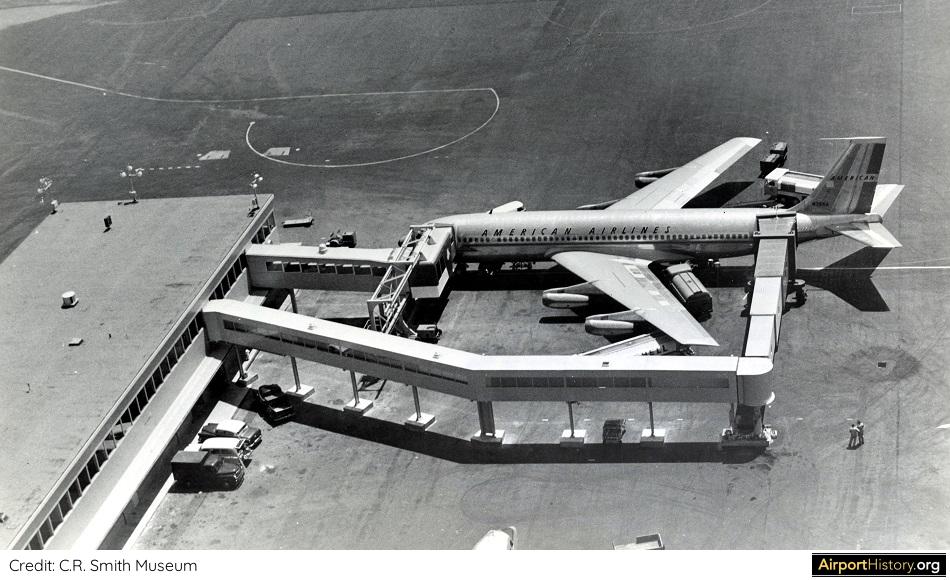
A July 1959 aerial view of the world's first operational modern boarding bridge, developed to serve American Airlines' Boeing 707s. American's choice to park aircraft nose-in saved space as opposed to side-in parking, but necessitated the construction of a long fixed corridor with an attached movable Jetway in order to enable boarding from the back. Credit: CR Smith Museum
American's choice for aircraft to park nose-in saved gate space, but necessitated the construction of a long fixed corridor with the movable Jetway (known as ramp-drive) attached at the end. The fixed parts of the bridges were provided with windows and red carpet.
A Boeing 707 with a 112 passengers could be loaded in five minutes. Trials with the Boeing 707-120 showed that the time saved by having a front and rear boarding bridge was only a few minutes and did not justify the extra cost of the rear door bridge. Hence, American continued with front loading only. The corridor was dismantled and the jetway was used at the adjacent gate.
A Boeing 707 with a 112 passengers could be loaded in five minutes. Trials with the Boeing 707-120 showed that the time saved by having a front and rear boarding bridge was only a few minutes and did not justify the extra cost of the rear door bridge. Hence, American continued with front loading only. The corridor was dismantled and the jetway was used at the adjacent gate.
DELTA AIR LINES AT ATLANTA (1959)
In late 1957, Delta Air Lines started contemplating the design of a boarding bridge for use on their upcoming DC-8s out of Delta's Atlanta homebase. Delta conceived a simple boarding bridge that would require the aircraft to park "nose-in" and could only extend outward to the aircraft as well as up and down to adjust to different door still heights which could vary due to aircraft load.
In late 1957, Delta Air Lines started contemplating the design of a boarding bridge for use on their upcoming DC-8s out of Delta's Atlanta homebase. Delta conceived a simple boarding bridge that would require the aircraft to park "nose-in" and could only extend outward to the aircraft as well as up and down to adjust to different door still heights which could vary due to aircraft load.
|
Delta commissioned the Pacific Iron and Steel Corp. to produce detailed designs and placed a USD 265,000 order for 17 "Jetways" for Atlanta's new terminal which was being planned at the time. The order was contingent on the timely and successful deployment of two prototypes at Atlanta's temporary terminal in time for the arrival of Delta's first DC-8 on July 22, 1959.
Due to an accident with the train transporting the two prototypes, the bridges only arrived a week before the planned arrival of the DC-8. Technical problems were fixed just in time and the boarding bridge successfully extended out to the aircraft after it had arrived at the gate. |
UNITED AT SAN FRANCISCO (1959)
In early 1959, after the trials with the "Aero-Gangplank" at Chicago O'Hare, United Airlines commissioned the Pacific Iron and Steel Corporation, which now was quickly becoming the go-to company for boarding bridges, to design and build a passenger gangway similar to the ones featured on cruise ships, but to service aircraft. Pacific Iron and Steel came up with the classic, telescoping bridges that are ubiquitous at airports around the world today.
Contrary to Delta and American, United stuck to the concept of side-on or parallel parking, enabling aircraft to taxi in and out under their own power and allowing boarding bridges to be connected to both the front and back of the aircraft. This enabled quicker boarding as well as separate boarding of first class and coach passengers. It did however require more gate space and more protection from jet blast.
In early 1959, after the trials with the "Aero-Gangplank" at Chicago O'Hare, United Airlines commissioned the Pacific Iron and Steel Corporation, which now was quickly becoming the go-to company for boarding bridges, to design and build a passenger gangway similar to the ones featured on cruise ships, but to service aircraft. Pacific Iron and Steel came up with the classic, telescoping bridges that are ubiquitous at airports around the world today.
Contrary to Delta and American, United stuck to the concept of side-on or parallel parking, enabling aircraft to taxi in and out under their own power and allowing boarding bridges to be connected to both the front and back of the aircraft. This enabled quicker boarding as well as separate boarding of first class and coach passengers. It did however require more gate space and more protection from jet blast.
United ordered 10 bridges for their San Francisco base. The first four of these were installed at United's B concourse, the first concourse that was designed with boarding bridges in mind, on July 29, 1959. The bridges were put into use in time for United's scheduled jet services, which commenced on September 18, 1959. The remaining six bridges were installed in late 1959 and in early 1960.
At around the same time, United ordered a large number of boarding bridges for its future concourses and terminals at Chicago O'Hare, Los Angeles, New York Idlewild and San Francisco. This made United the first airline to commit to the boarding bridge in a big way.
At around the same time, United ordered a large number of boarding bridges for its future concourses and terminals at Chicago O'Hare, Los Angeles, New York Idlewild and San Francisco. This made United the first airline to commit to the boarding bridge in a big way.
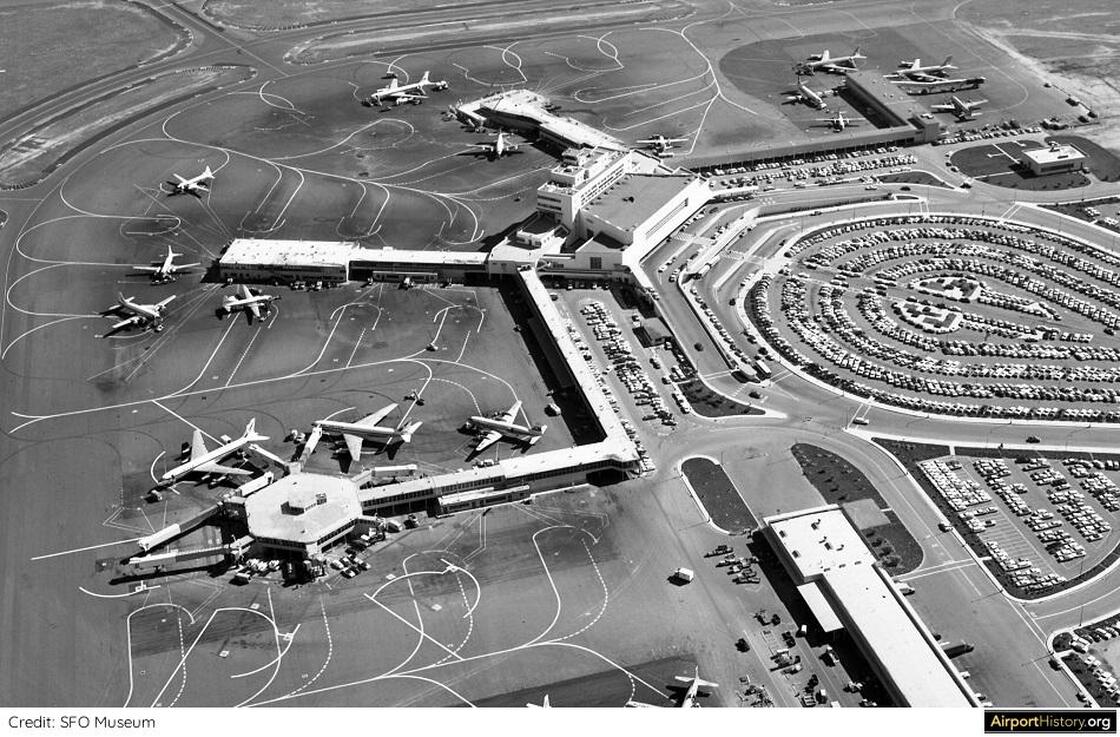
An aerial of San Francisco's terminal area taken on February 19th, 1960. In the foreground we can see United's Concourse B, which by now has six boarding bridges installed. The remaining four would be installed sometime during the next months. At the top right we can see American's first boarding bridge Credit: SFO Museum
The first bridge outside the United States
|
AMSTERDAM SCHIPHOL AIRPORT (1961)
The first boarding bridge outside the US was inaugurated at Amsterdam Schiphol Airport in the Netherlands in the summer of 1961. In early 1958, KLM's ground handling equipment manager, a certain mr. A.C. Tolk, had seen United's "Aero-Gangplank" at O'Hare on his way back home from an IATA conference in the US. He liked the concept and saw its potential for the expanded Amsterdam Schiphol Airport, which was being planned at the time. As soon as he returned to the Netherlands, he contacted Aviolanda, a small Dutch aircraft manufacturing firm that mainly built aircraft parts, to discuss his vision. |
|
Aviolanda agreed to take on the project together with pneumatic equipment firm Unicum and set up a joint venture firm called Aviobridge N.V. By the end of May, the company had developed a concept for a boarding bridge.
In January 1959, Aviobridge submitted a request for almost half a million Guilders in development loans to the Dutch government to design, build and test a prototype of the "Aviobridge", which was inaugurated two and half years later, on August 7th, 1961. |
The bridge was connected to Schiphol's intercontinental departure lounge and hence, could only be used for boarding flights. It was exclusively used to service KLM DC-8s and was used seven days a week and three to four times a day.
Later on, Aviobridge delivered 25 boarding bridges for the expanded Schiphol Airport in 1967 and went on to become an important global supplier of boarding bridges in the ensuing decades. Better a well-copied idea than an ill-conceived one!
Later on, Aviobridge delivered 25 boarding bridges for the expanded Schiphol Airport in 1967 and went on to become an important global supplier of boarding bridges in the ensuing decades. Better a well-copied idea than an ill-conceived one!
To be continued!
In Part 2 of our history, to be posted in the future, we will learn how the boarding bridge spread throughout the US. We'll also explore an interesting alternative to boarding bridges, the Passenger Transfer Vehicles or PTVs. Lastly, we'll address Pan American's eccentric choice for boarding passengers in its trendsetting terminal.
Acknowledgements
This article would not have been possible without the kind assistance of the following individuals and institutions; Barbara Hanson, consultant at the United Archives and Michael Masuka, Managing Director-Creative Services at UA; Marie Force, Archives Director at the Delta Flight Museum, Timothy Mcelroy of the CR Smith Museum; The SFO Museum and Jon Proctor.

